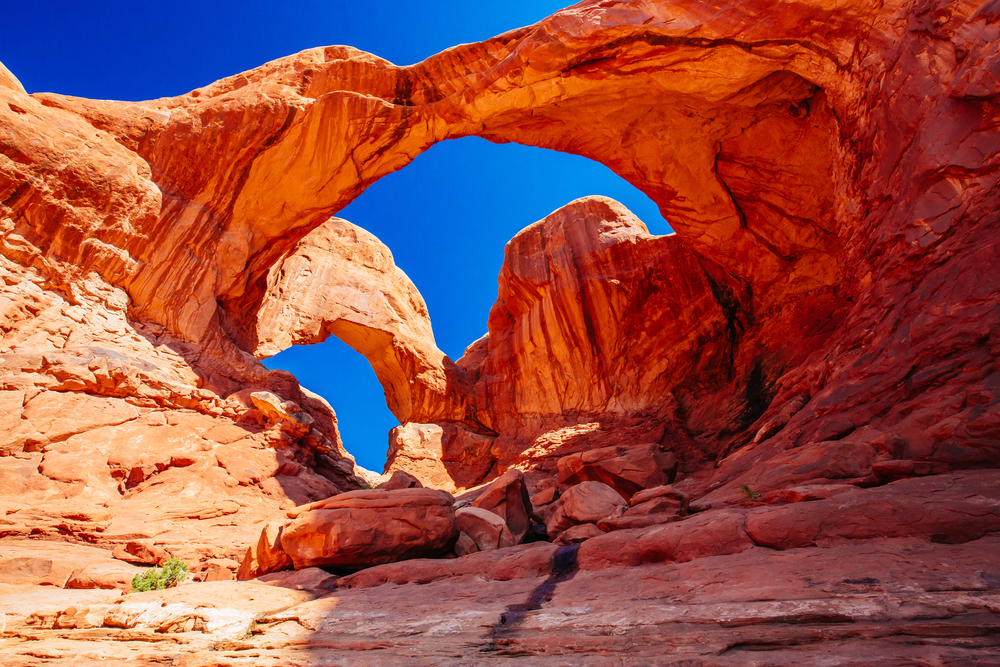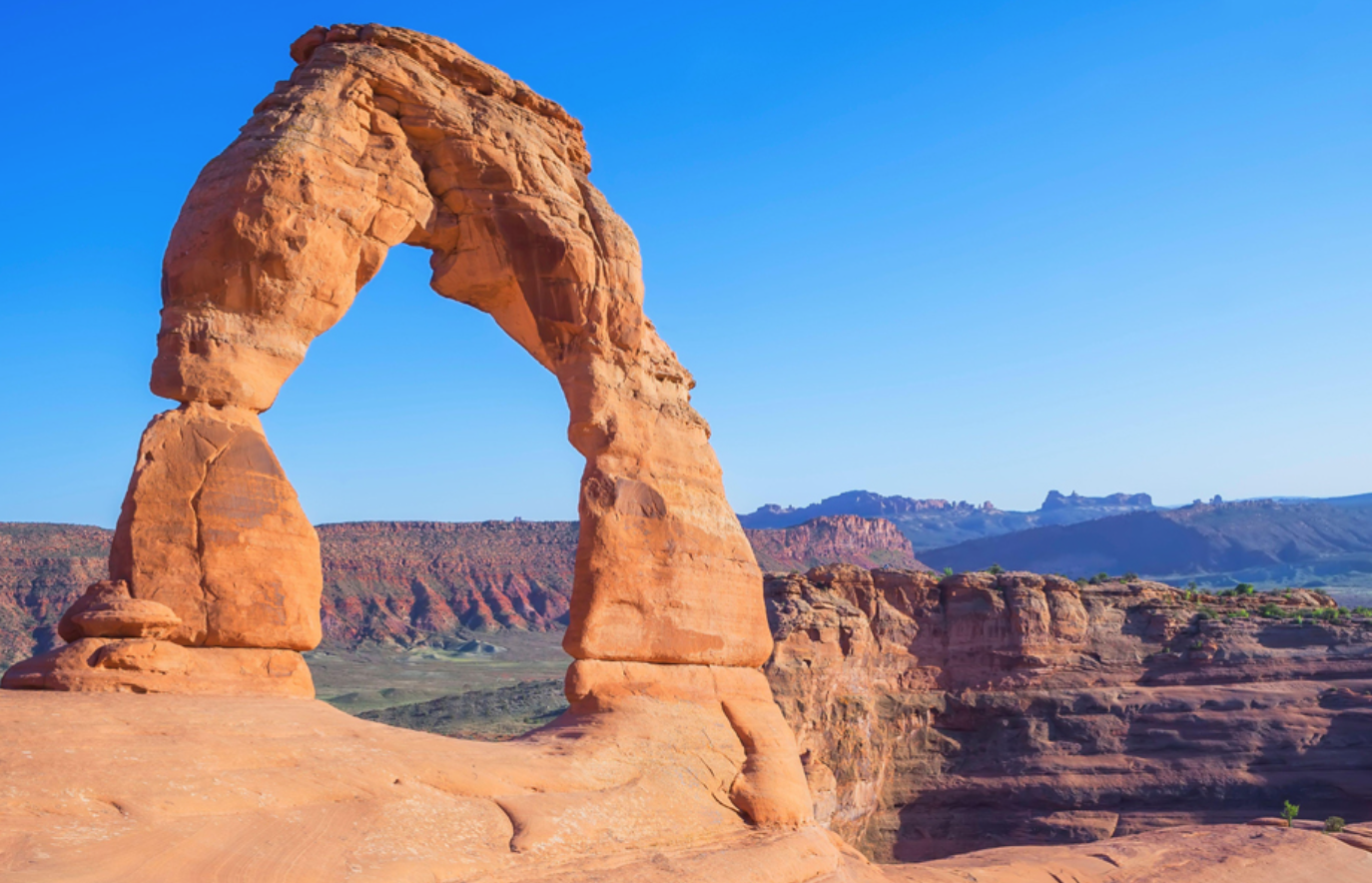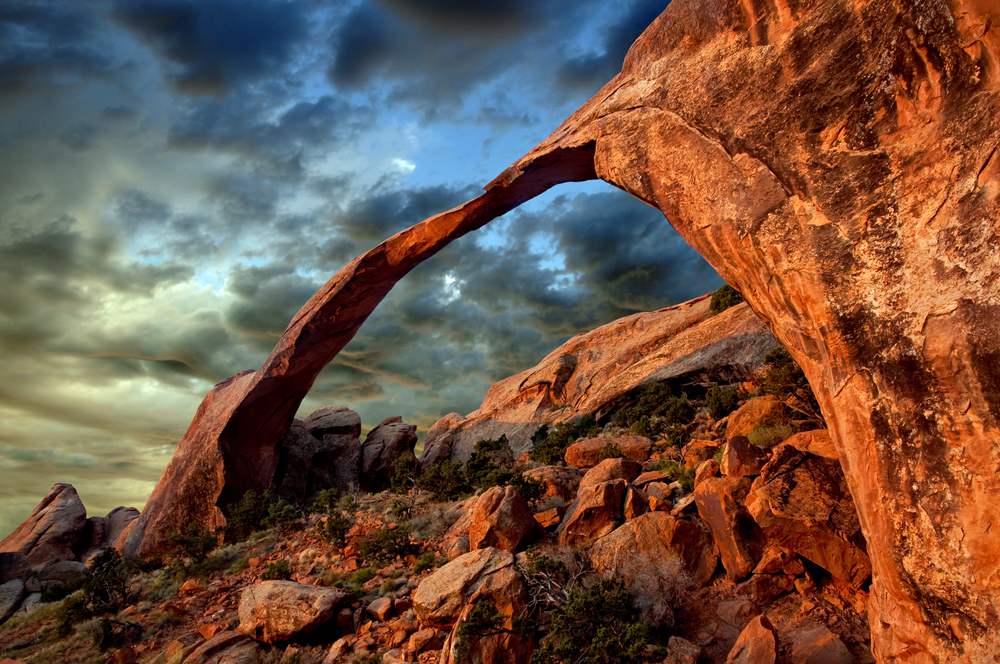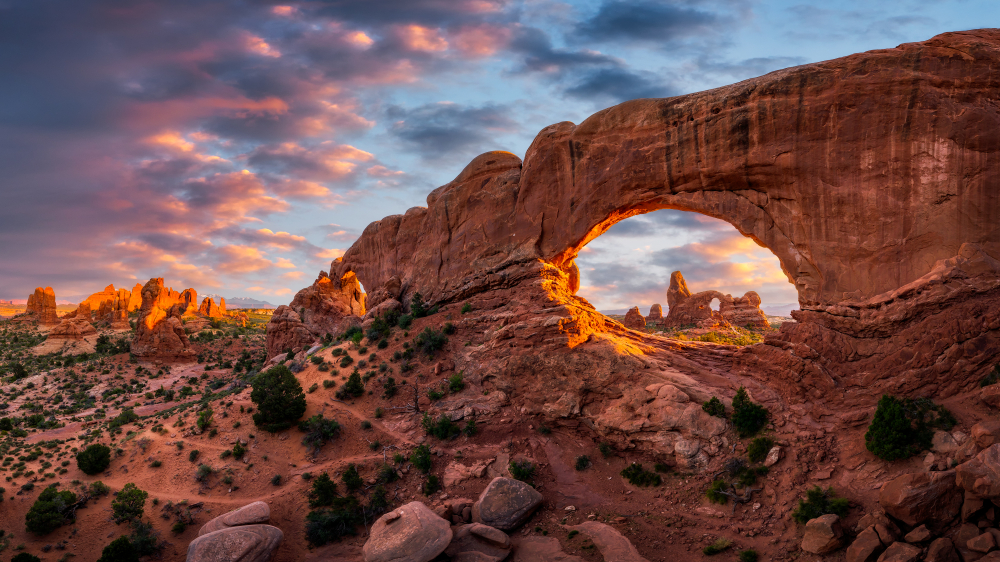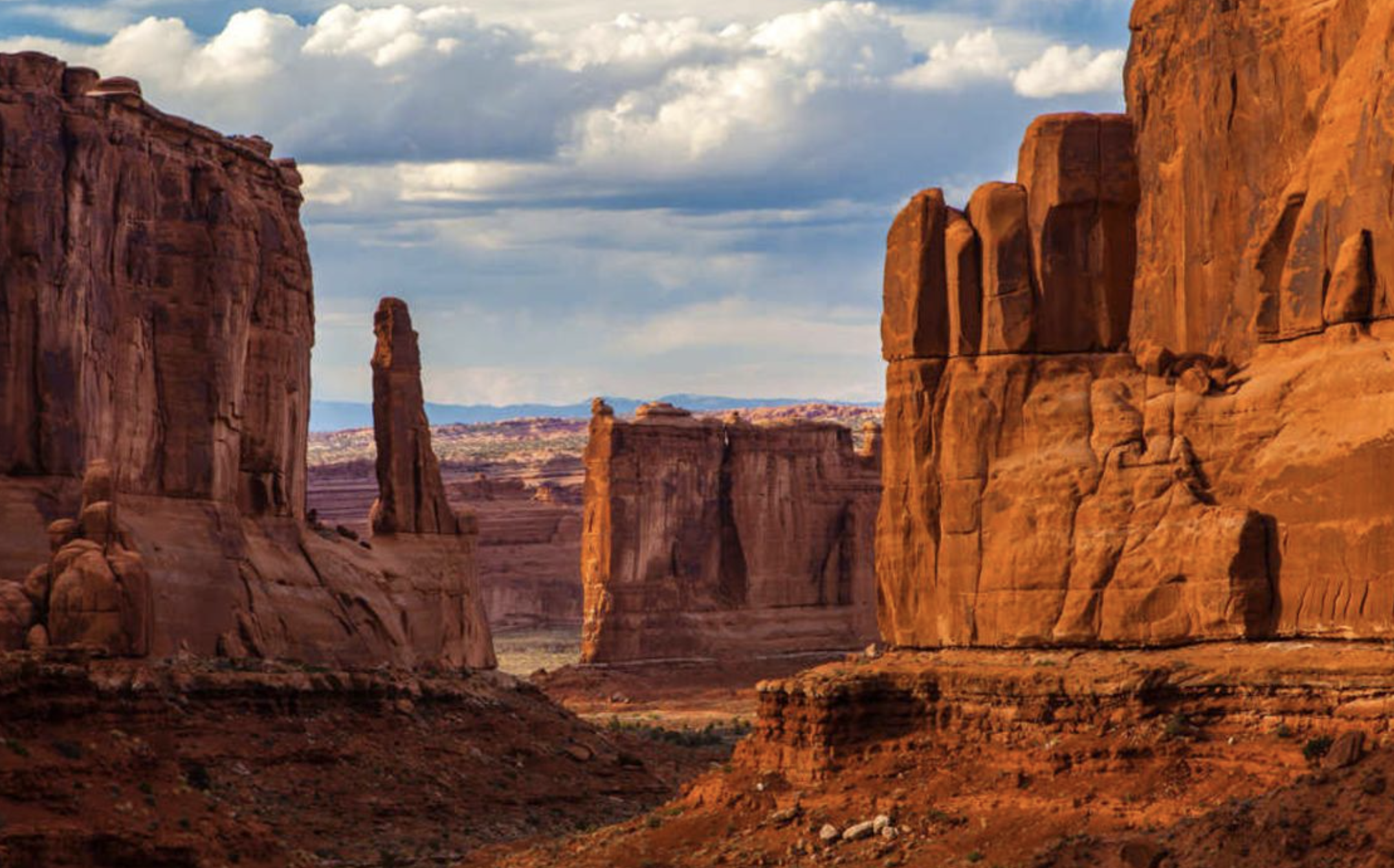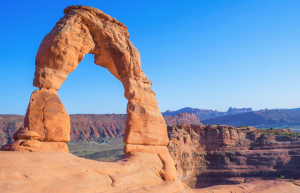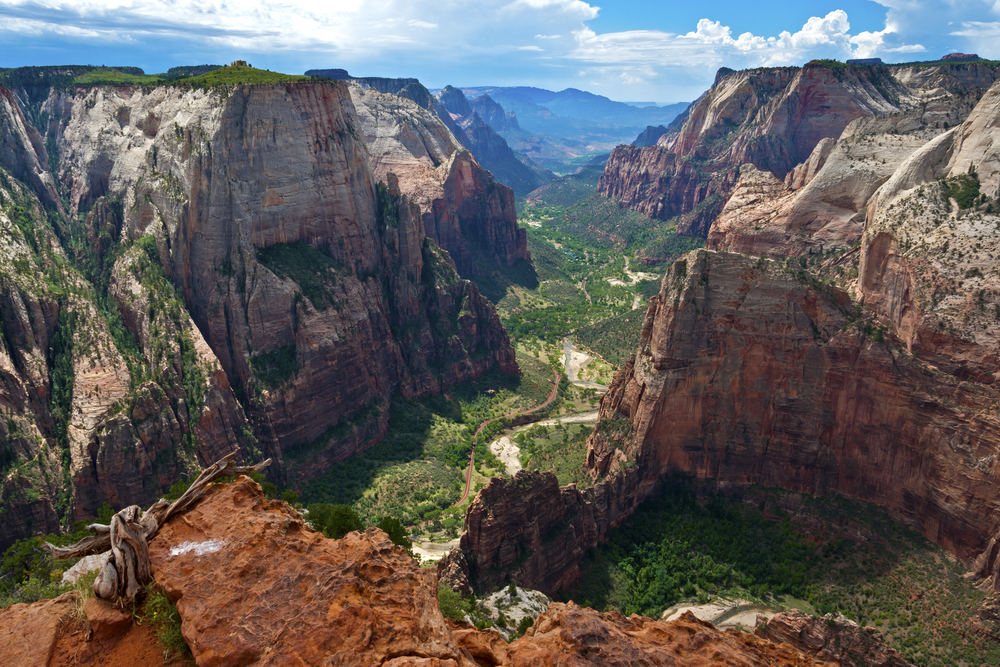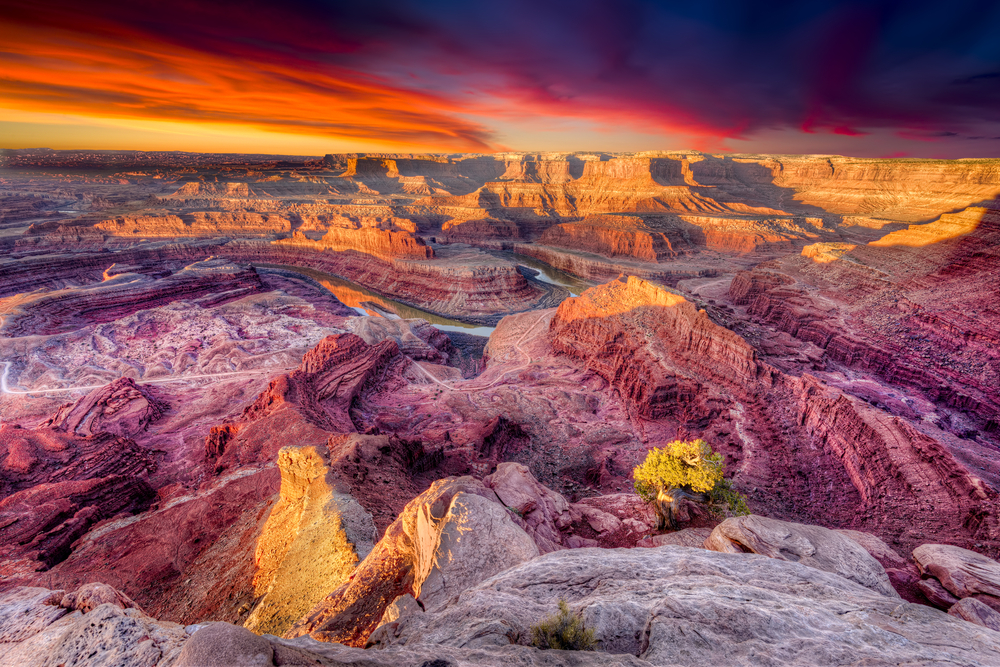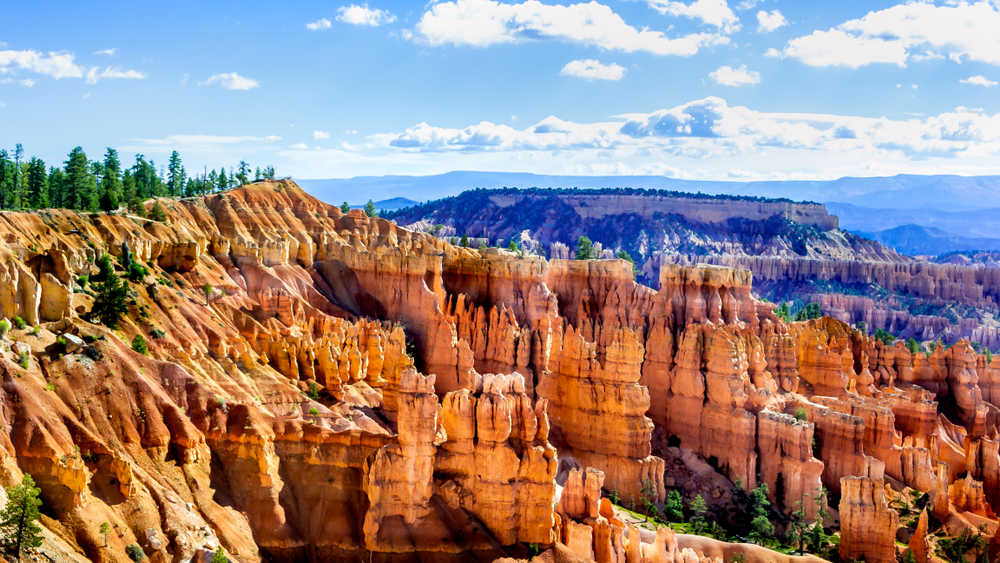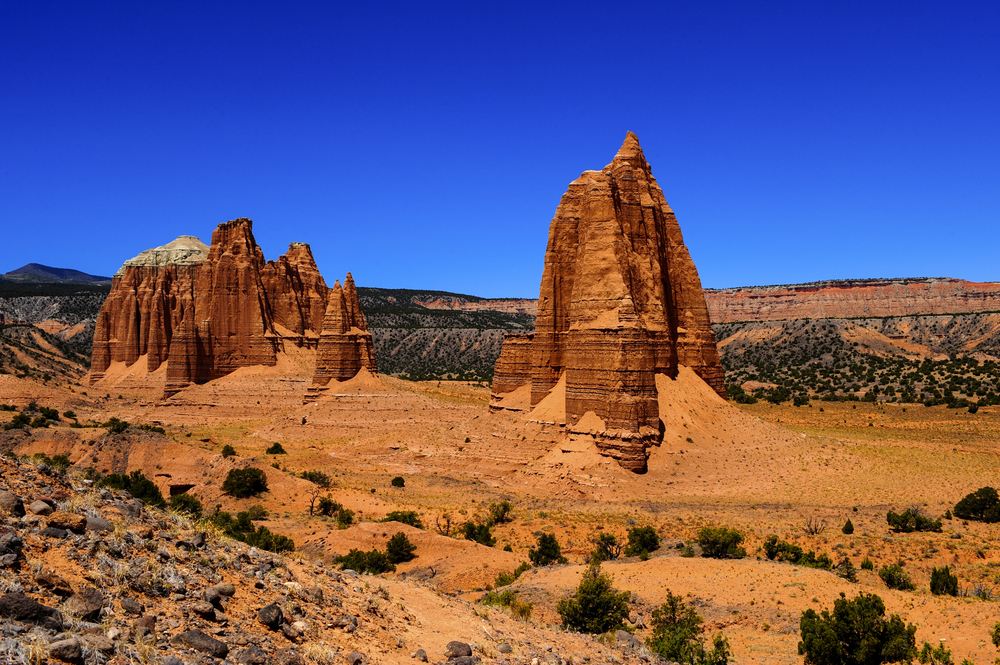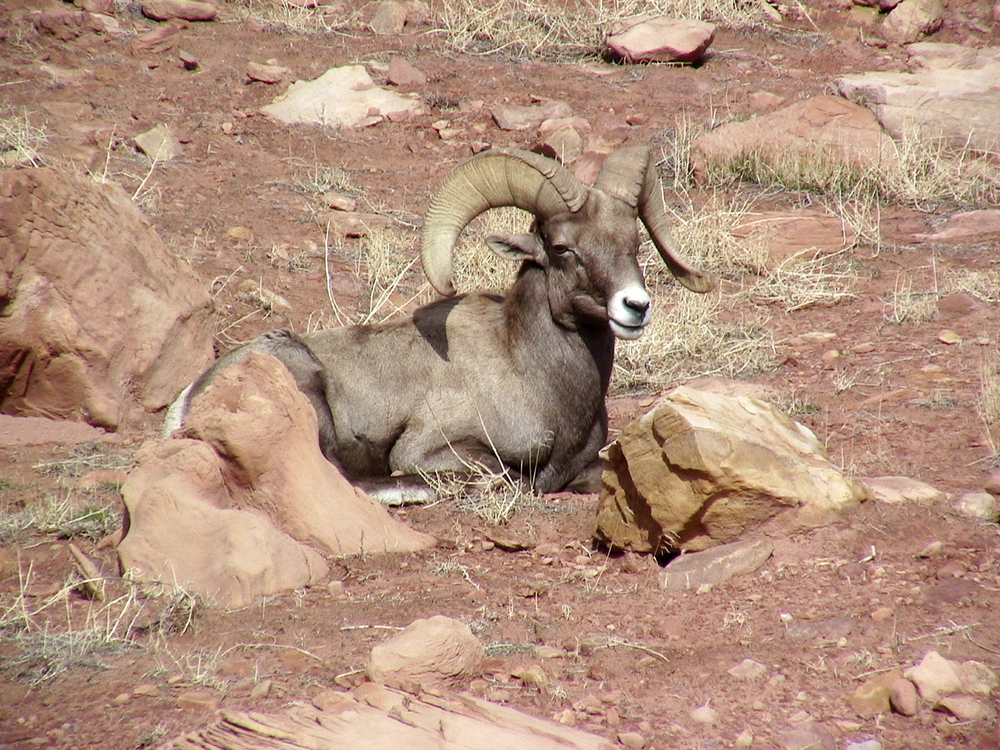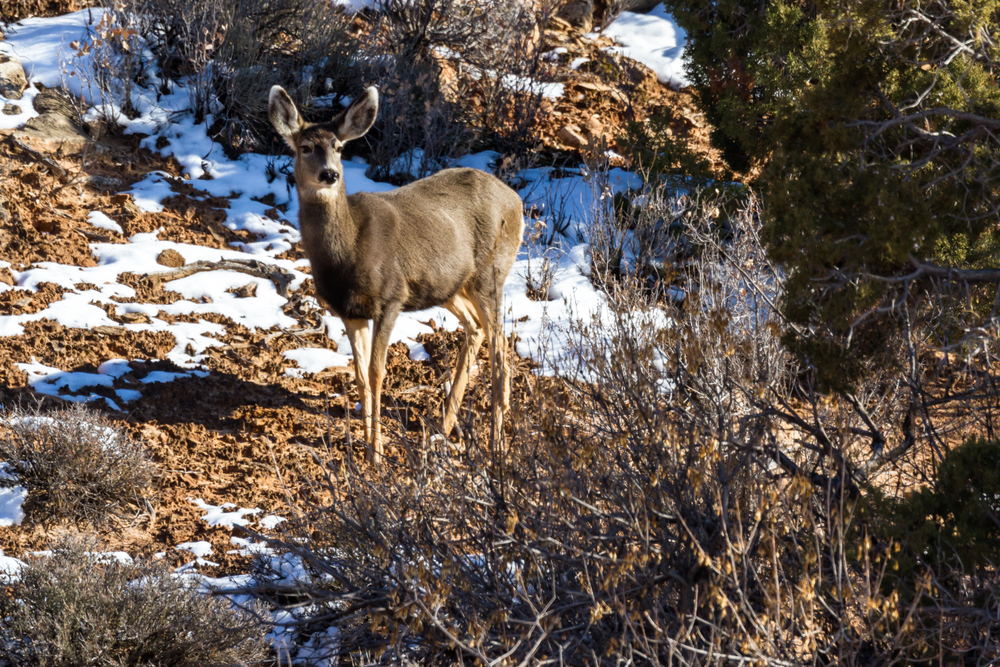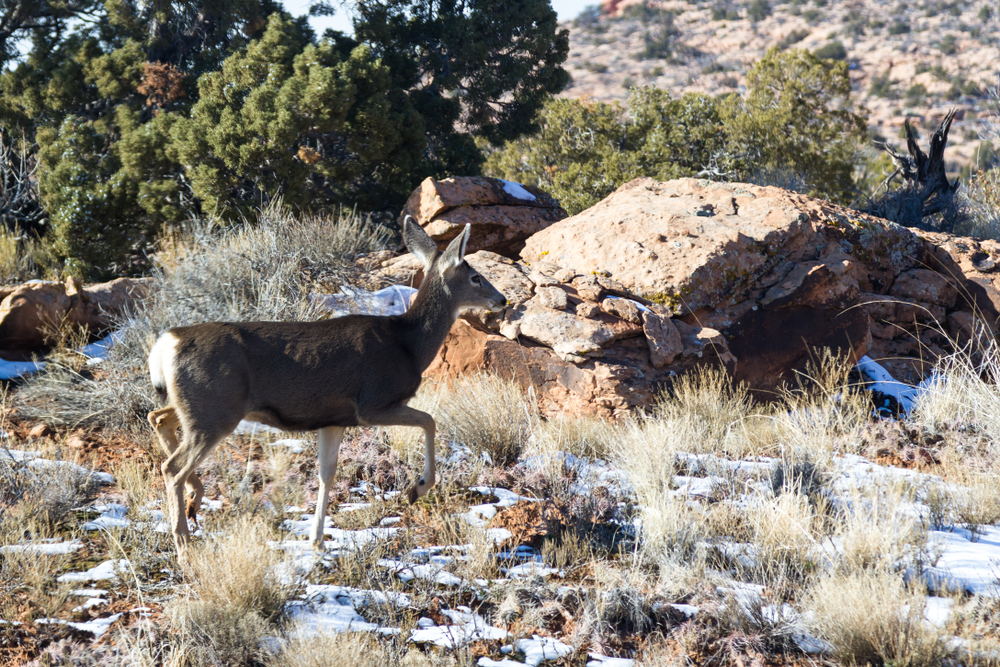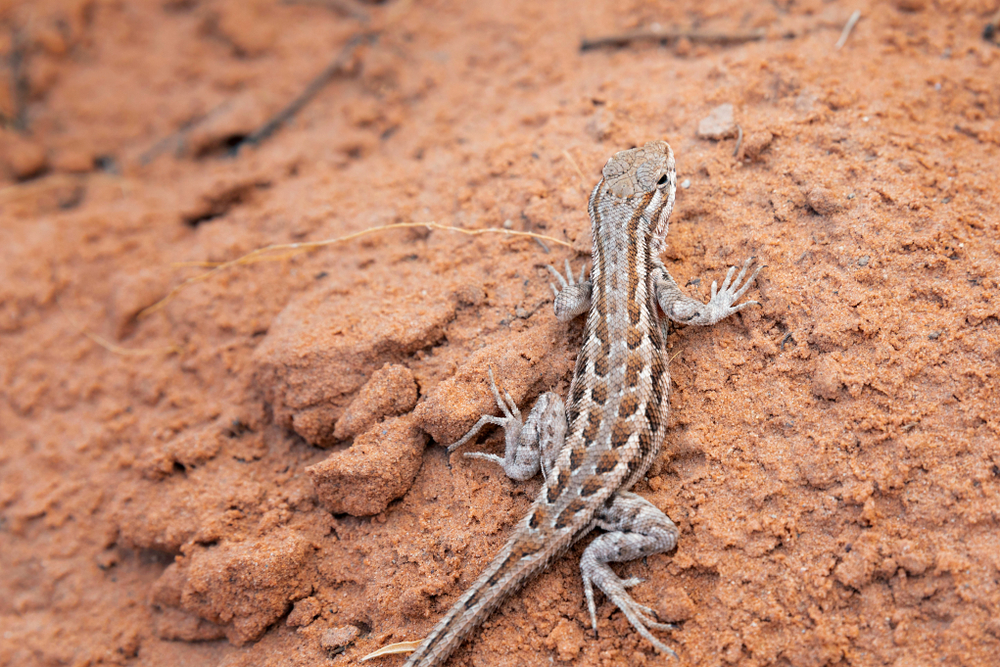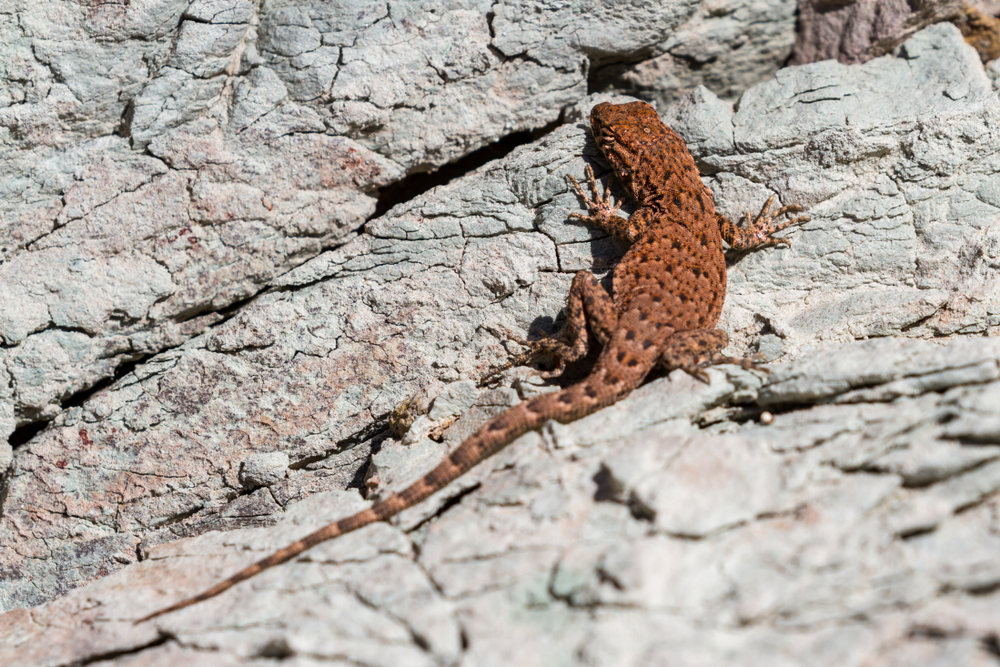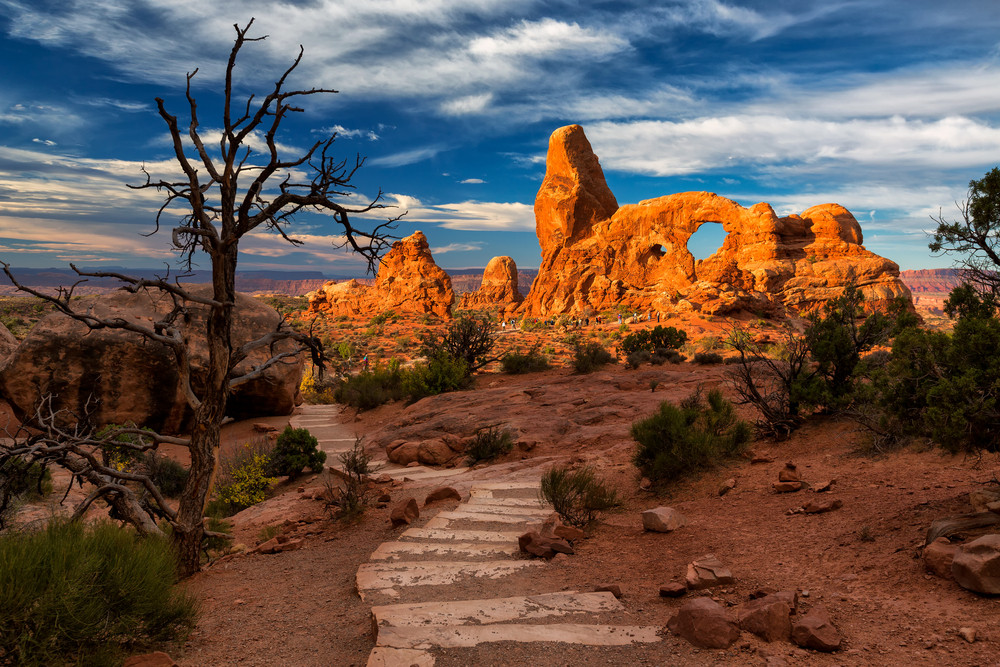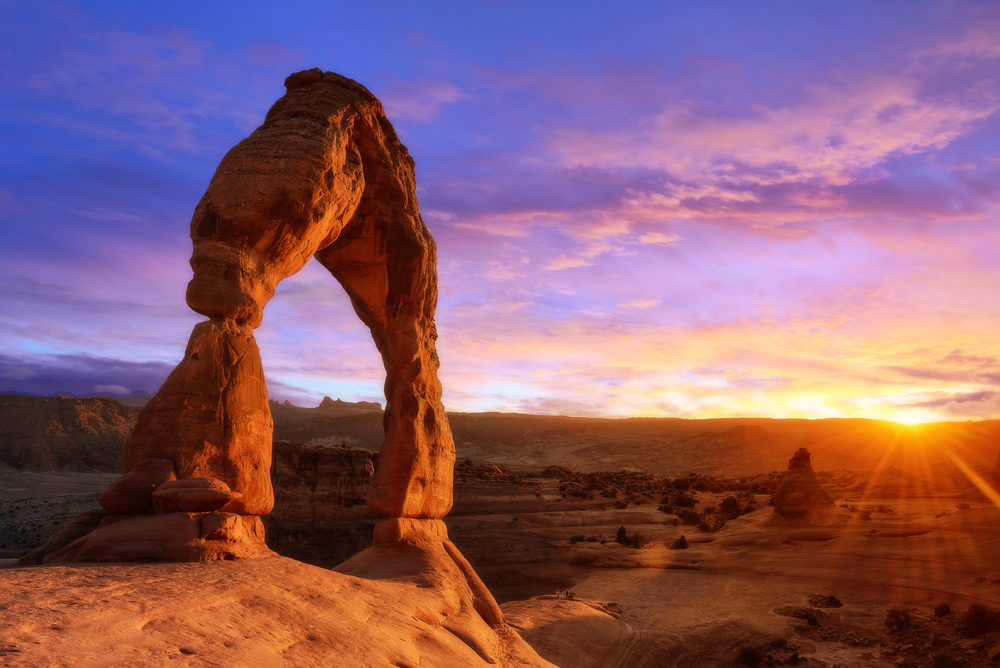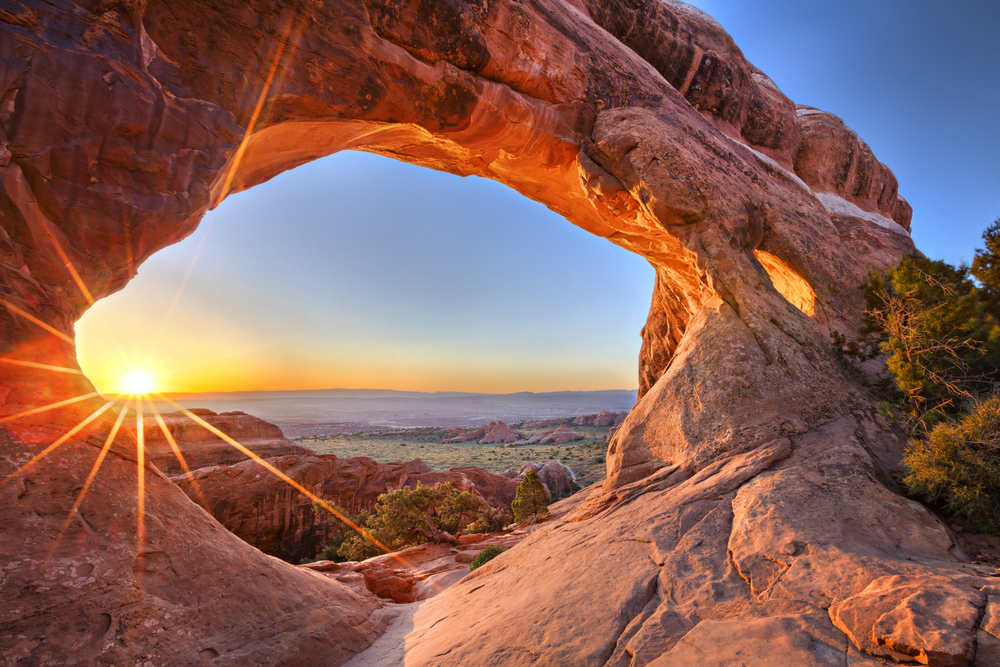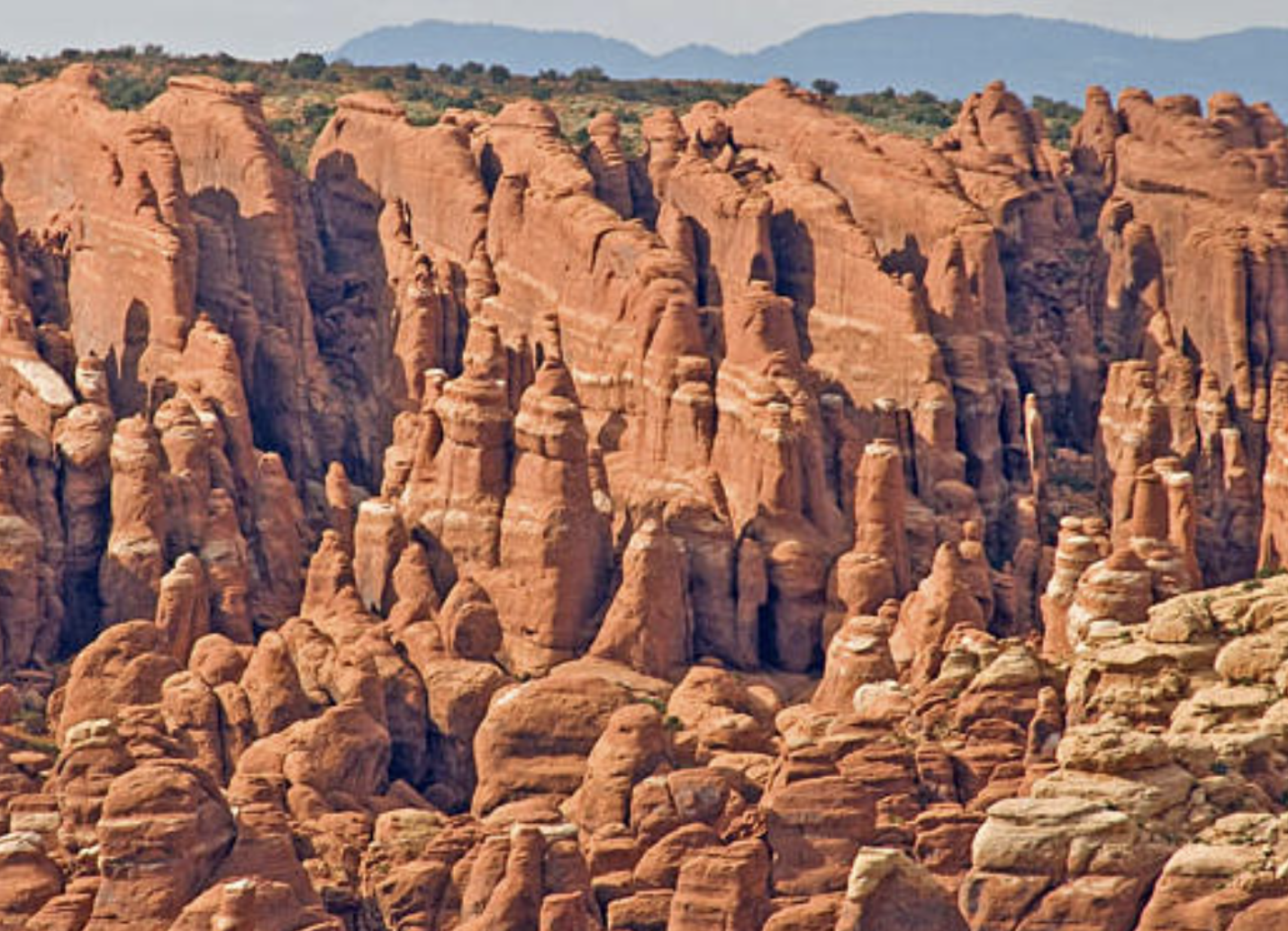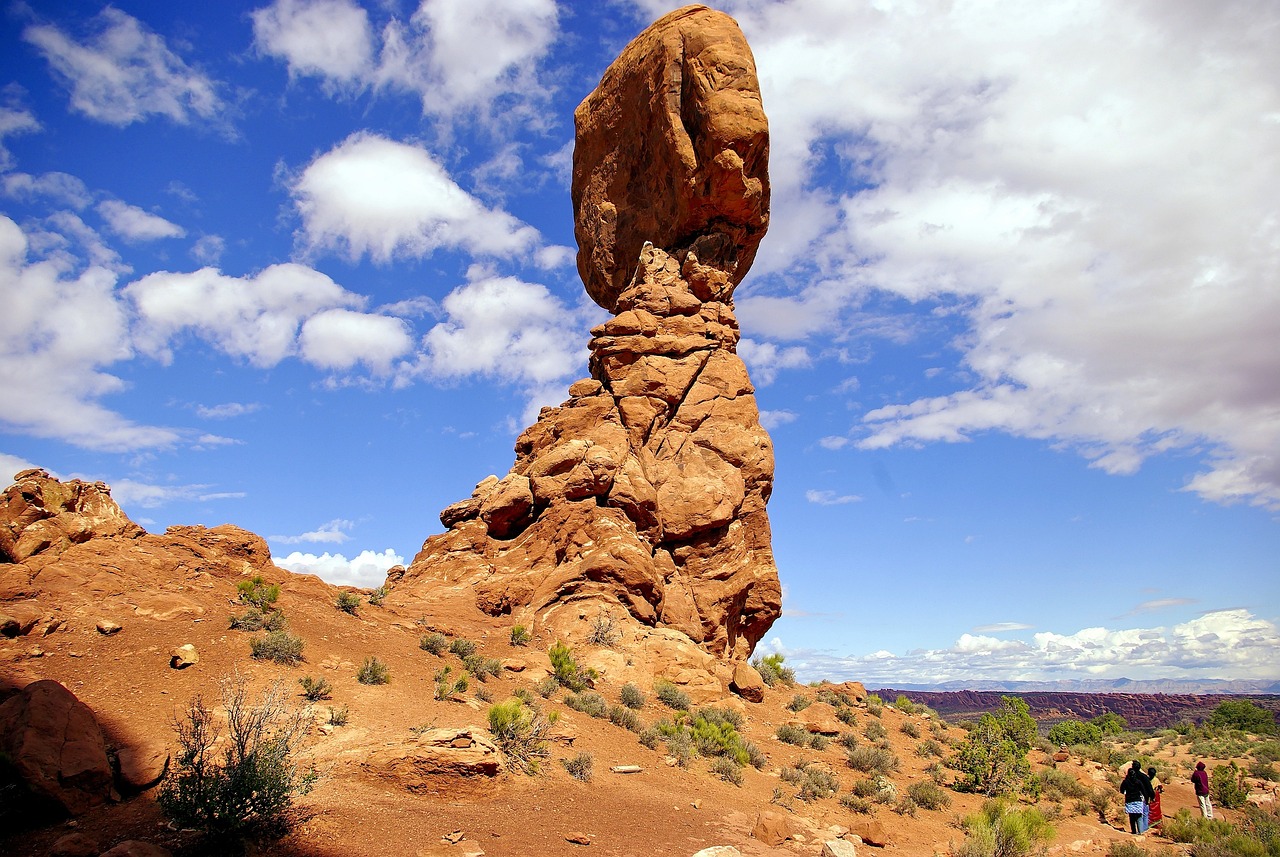Popular
Arches National Park, renowned for its natural sandstone arches and rugged terrain, also serves as a habitat for a variety of wildlife species adapted to the desert environment. Amidst the stark beauty of the Utah landscape, these animals thrive, each contributing to the ecological diversity of the park and offering visitors a glimpse into the resilience of desert life.
Mule Deer – With their large ears resembling those of a mule, Mule Deer are a common sight, gracefully navigating the rocky terrain in search of vegetation.
Desert Cottontail – These small rabbits, with their distinctive fluffy white tails, are often spotted at dawn and dusk, nibbling on the sparse desert vegetation.
Red-tailed Hawk – Soaring high above the park, the Red-tailed Hawk is easily identified by its reddish tail, keenly scanning the ground for prey.
Peregrine Falcon – The world’s fastest bird, the Peregrine Falcon nests on the park’s cliffs, diving at incredible speeds to catch smaller birds mid-flight.
Rock Wren – Adapted to the rocky environment, Rock Wrens are often heard before seen, their melodious songs echoing among the stone formations.
Common Raven – Intelligent and adaptable, Common Ravens are frequently observed across the park, their black plumage and large size making them unmistakable.
Mountain Lion – Though elusive and rarely seen, Mountain Lions roam the park, apex predators perfectly adapted to the desert’s challenges.
Collared Lizard – Vibrant and active during the day, Collared Lizards, with their distinctive neck bands, can be seen sunning on rocks or sprinting after insects.
Western Rattlesnake – A symbol of the wild desert, the Western Rattlesnake is respected by visitors and wildlife alike for its potent venom and iconic rattle.
Spotted Towhee – With their striking black, white, and orange plumage, Spotted Towhees are often found rummaging through the underbrush, their call a familiar sound.
Arches National Park’s wildlife, from the agile mule deer to the soaring peregrine falcon, showcases the adaptability of life in the desert, reminding visitors of the natural world’s enduring beauty and resilience.








































































